Arcen Games latest title still in production, Stars Beyond Reach, is nearing release. We decided to ask Chris Park, the lead developer, a few questions to get a better grasp of the game. Stars Beyond Reach was showcased in our List of Games you shouldn’t miss, and with the release fast approaching, we thought it was appropriate to get more insight on the game.
Stars Beyond Reach is a turn-based, sci-fi themed, planetary scale 4X strategy game. However, unlike Civilization: Beyond Earth or Sid Meier’s Alpha Centauri, this title seems to take a page from the City Builder genre where the player expands out their settlements by placing buildings and districts as they sprawl out. Just like City Builders, the game has simulated populations you need to oversee their needs like crime control, health, and pollution. Despite all this, the game is still a full 4X title, which means this is not SimCity with 4X elements but a 4X game with SimCity-like elements. As always, Arcen doesn’t like to stay in the box of established conventions and this game hints to being no exception.
You can go to the game’s official page if you wish to get a more stylised features description of the game (warning: Arcen has a sense of humour with everything they do, despite the things that happen in their games are far from being a joking matter, usually). For those who want an even more direct and detailed description of the game, the following interview may be helpful.
The Not-So-Short Interview
SS: What are your opinions about the 4X genre? You’ve obviously toyed around with the genre in the past and are now going forward with a title that seems to be closer to the traditional 4X formula. What were your motives to do so?
Chris Park: For me it really depends on the game. There are definitely more RTSs that I have liked historically, but in terms of my very favorite strategy games, there’s an even mix between 4X and RTS. I think that a lot of games in the 4X genre tend to be too submenu-driven for my taste, if that makes sense. I don’t mind an abstract representation — I’m a big fan of Risk, for instance, and that’s about as abstract as you can get — but when I can’t “see the state of the board” in any remotely meaningful way by looking at the game map, that does bother me.
That said, the opportunity for depth in this genre is unparalleled within strategy. There’s no crutch of “well the player will have to make this choice fast, so the details of the choice don’t matter much anyway.” Designed properly, a good 4X can instead really challenge the player to think at their own pace — and ideally, for experienced players of a game, they can speed through turns while making really meaningful decisions.
SS: Arcen Games is known to think outside of the box, creating unique mechanics. This is both good but can also be off-putting for some players that like more traditional mechanics. Before we discuss any new ideas or ways you’ve approached game design, what can you tell us that will be familiar to the fans of the genre?
Chris: With our game AI War, I think it was a case where it “felt” like most RTS games that you’d played before, in terms of controls and so forth. For this game, I think that there is a parallel in that it “feels” like Civilization in a lot of ways — despite it being really really different — so there’s an immediate sense of being at home to some degree. Making it so that players could feel reasonably competent just in navigating the game at the start is really important to me with this one, and then the uniqueness hopefully unfolds naturally from there.
SS: You have also mentioned SimCity a few times as a source of inspiration for some of your design choices. What can you share with us about this and how has it influenced the game in the end?
Chris: If you look at Civilization, a single hex is a city, right? And there are a few improvements on a few tiles around that. In this game, every building takes at least one tile, sometimes more — bringing out a lot of that SimCity feel. Your empire is thus a lot more visible, and your buildings have position on the map that matters relative to one another. As with SimCity, you have to think about the effects of pollution of industrial stuff on the buildings that surround them, for instance. So you want to either build those downwind, or build hazmat buildings around them, or both.
There is also an element of “simulated citizens” here that you don’t quite get in some 4X titles. You have population counts that move around, need jobs, need to staff buildings, etc. It’s a bit like how your citizens move around in SimCity based on what you create for them. You have some strong tools to make them do what you want in times of dire need, though — if something is understaffed because citizens don’t like to move jobs but a monster just murdered three city blocks of people, then you can shut down less-critical buildings to force your citizens to give up their jobs there, and then they’ll take up those more critical posts.
SS: Your last game, The Last Federation, had more of a behind the scenes schemer approach to the gameplay. So, what approach have you taken with Stars Beyond Reach? How much of it will be a hand’s off simulation and how much of it will involve more direct participation from the player?
Chris: You are definitely firmly in the dictatorial role that you would expect from the genre. One thing that does differ is that the other races are unusually powerful, and you’re unlikely to just go slicing through them with a military. That “paint the map your color” strategy might work, but it would be hard. Instead you’re likely to shoot for a hybrid victory of dominating different races different ways — the Acutians are hooked on your exports, the Andors are in debt deep with your banks, you’ve militarily eradicated the Burlusts with the help of some other races, you’ve got the Fenyn subdued based on how much espionage intel you have on them, and you’ve subjugated everyone else into puppet states, let’s say.
So in that sense, on the global stage, you can’t just come out and try to beat everyone’s brains in. So in that regard you will have to make at least temporary alliances, get involved in international conflicts that don’t involve you (or choose to avoid them, depending on the time), and generally undermine everyone else in a variety of ways. The “more than just military is going on” aspect is something that I really love about the 4X genre in general, but usually you have to choose a single path to victory: here that’s not the case, so you can treat each individual race as its own special case.
SS: Now, what are the new and unique approaches you are trying to bring with the game? We heard mentions about how you approach military deployment (not using the traditional way of controlling unit pieces on the map) differently. What other different approaches to mechanics can you share with us? You also mentioned of having a different approach towards scouting and exploration.
Chris: Whew, I could literally write for a few dozen pages explaining all the things that are new here. One of the big highlights is how the game is asymmetrical between you and the computer players. Each one of the computer races has their own set of buildings and motivations and AI and even rules, and they play pretty differently from you, want different things, and so on. This is similar to what we did in AI War, but taking that idea even further.
Overall when it comes to the other things that you mentioned — military, scouting, and so forth — it all boils down to one idea: making things as fluid as possible, so the time between you having an idea and executing that idea is as tiny as possible. That does indeed mean no units to move around the map in a fiddly way. You position bases and then attack via the buildings themselves — you don’t even select specific buildings, you just select a building type. The unit animations that happen are non-blocking, so you don’t have to wait for attacks to resolve before you launch more attacks or see the results or even start a new turn! That’s pretty huge for me, because I love seeing attack animations but hate waiting for them.
Taking a lot of things that might normally be in a submenu and instead make them part of the main map, and making it so that adjacency and position thus comes into play, has also been a really big goal of mine. That actually adds a surprising amount to the city building portions of this, because it makes it so that you are adapting to the terrain, the resources and natural wonders available, what your allies and enemies are doing, and what your goals are. That might sound overwhelming, but really it’s just a way of saying that these cities evolve over time and in a way that is not cookie-cutter or “different just for the sake of making something a different shape,” which are both things that happen with players in a lot of strategy and city building games. So I’m very excited about that bit.
SS: We were wondering if you can share some more about those unique elements. You don’t have to give us the 12 pages, but perhaps a little more details would be nice.
Chris: A lot of what makes this so unique is its flow, and how it is different from “the sum of its parts,” so to speak. One of our beta testers noted “it’s like Civilization but it really isn’t,” in a happy way.
Probably the biggest single difference is how position matters in this game. This is in a carrot sense much more than a stick sense, so to a very casual player they may completely miss the significance of this. But if you’re going to take on the top difficulties, you’re going to be really honing your cities based on the concepts of what makes the most sense, where. How efficiently can you place your solar cells to maximize their output? Where can you place a district to best take advantage of some rich mining and still have room for the factories you want there? Is it better to have the smog from that science lab deep in your city, thus requiring hazmat to protect some more sensitive buildings like residences or hospitals, or do you build it further downwind… but in a more risky place that an AI could ambush you? How much redundant power generation do you build? Are you the sort that rides the bleeding edge of efficiency and turns off secondary services when a brownout hits because a flying saucer just nuked your geothermal plant, or are you the sort who has two extra heavily-guarded nuclear power plants that are very far apart from one another and making it so that you always have enough redundancy to avoid a brownout even under heavy attack?
On the tech tree, that’s another area that is really subtly different from something like Civilization if you are just looking at it casually — or just looking at the leftmost portion of it that is visible at the start of the game. Basically, in Civ you have to unlock everything eventually on the left if you’re heading to the right, because of how the prerequisites interact. Plus you just need that newer stuff in order to function. Here that isn’t really the case, because you are never unlocking better versions of stuff you already have — if you want that, there are some augment techs, and social progress gives you some of that, and your procedural market item “techs” also provide that. Instead you are choosing what sort of city you want to have. If you are making a big focus on science, then okay, probably you can unlock everything eventually. But otherwise there are a lot of cul-de-sacs of cool tech that you are going to be choosing between, stuff on the left that you pass on your path to the right. Maybe you never unlock the stock exchange because you’re really focused on the fishing and mining sector instead, and that’s all you need for monetary income. Maybe you never unlock fine dining because you’re going about that kind of social progress generation a different way.
And that brings me to another thing that is pretty unique: why do you care about building your baseline city in a better-than-average way? Obviously there is the goal of avoiding bad things like too much pollution making you sick, but those are not that interesting in the long run. Instead, it’s about generating social progress in a variety of forms, as well as the other adjacency augments. By setting things up such that your citizens are not only having the basic necessities, but are also what you would consider productive and happy, you can unlock a lot more of the social trees (there are three — government, commerce, and cultural), and that in turn can make you more powerful as well as open up more of the main tech tree, as well as special ending conditions you can shoot for.
New player? Don’t stress about building placement, please! Just throw some stuff down, get it out there, and learn as you go. No problem. You’ll notice some things where you go “ooh, I get a bonus if I put that together with that other thing!” And those are little happy moments, and you wind up looking for more of them. Next time you play, you automatically find yourself designing a more efficient town from the start, and shaping yourself to the terrain more. Eventually you’re doing those things super well alongside hopefully getting creative with it, too.
SS: Also, can you give us an idea what the player will be doing in the game? Perhaps a small preamble of what the player will be doing in the beginning of the game to help our readers get a better idea of what your game will be like.
Chris: You start out by landing your spacecraft and then setting up a city around it. You start with one district that you’ll quickly outgrow, and then you expand your districts either near one another or all the way across the map as you grow. You discover natural wonders that give strong adjacency bonuses to buildings next to them, and so that will influence your build patterns. There are also 80+ kinds of resources around the map, which you can mine, harvest, or extract. You don’t have to make a district in order to control these, but if they are contested you may wish to have some nearby at least. These resources can then be converted into adjacency bonuses elsewhere in your city by special resource-processing buildings.
Spatially, that’s what you’re doing in the game, if we ignore the other races. But of course they are out there as well, and you may find yourself the target of attacks or desiring to attack another race over land or some other issue. Possibly you don’t want to be hemmed in and thus you need to carve a path. Maybe you just want to subjugate your nearest neighbor so that they become your puppet state and thus both a nice buffer and are not so much in your way.
Mechanically, you’re placing one or more buildings on most turns, but not all of them. You’re unlocking techs and social progress bonuses over time like you’d expect. Sometimes you might start constructing 10 buildings in one turn, but on some other turns you might just flip past them. I’ve played about 200 turns in half an hour before, but I know the game really well; I’ve seen other players at 400 turns after five hours or so. Disease and crime are big problems for you internally if you let them get out of control, so smart city design is important even without the AIs messing with you.
When the AIs are after you, you can either negotiate them away (depending), or call some other races to be your ally in that fight (hopefully), or fight them alone and weather it out (if that’s your style — or your lot in life, I suppose). When you’re after an AI, you’re going to build a network of teleporters over to near them, build a little military base, and then launch your skirmish. How far you carry it, and if they invite in other parties to help oppose you (possibly having guys show up on your doorstep or the doorstep of your puppet state), or if you invite other parties to join in smashing them, is up to you and the AI in that situation.
Chris (cont.): Ultimately it takes citizens to do the work of your empire, and so you need more citizens. But to have larger populations, you need things for them — food, water, places to live, either entertainment or work, crime protection, some sort of disease or other medical facilities, things to deal with pollution, and so on. So there’s a cycle of building up both your citizenry to power your more outlandish stuff (weapons, wonder-style major buildings, specialty things like embassies and international banks, etc.), and building up a really tight, efficient core of citizen amenities — ideally with enough redundancy that you can weather some degree of wreckage if a giant worm erupts from the ground, etc.
There are a variety of other activities that you may or may not choose to partake in, depending on your self-chosen path toward victory. You will probably engage in terraforming the land to be more like your native planet, as all the other races are doing. This brings you into atmospheric competition where you try to get the atmosphere most like your own, and the races are weaker or stronger depending on how different their ideal atmospheres are from the current. You have rebreathers, so you can either take the penalty and ignore that, or compete — it’s totally valid either way.
You can also focus on making those “procedural techs,” in the form of broadcasts, writings, philosophy, consumer products, military products, etc. Construction of your city and usage of resources can really augment this process as well, and these can both make you stronger as well as give you something to use in international trade. You might completely ignore international trade, and that’s cool too — maybe you are hoarding your procedural techs for yourself, which is fine, or maybe you’re not even making them because you’re too busy efficiently capturing territory and sowing discord between other races so that they stay off your doorstep.
There are a lot of meaningful choices right from the start of the game, even though the impact of all of them might not be apparent until later (and that’s nothing to worry about on the normal difficulty), but once you hit the later game is really when your breadth of playstyles opens up. Just because you’ve been ignoring international trade until turn 400 doesn’t mean you can’t suddenly redirect your empire into that after you’re done with a conquest spree. There is obviously a certain amount of inertia that you’re going to have with any large scale empire like this, but unlike a lot of similar games you really aren’t so hemmed in by earlier choices. “Well I started on the science path and now I’m behind on everything else, so this is all I can do” isn’t a thing.
It bears mentioning that, also unlike a number of other 4X games, the computer players can’t “win”. They have their own goals and so forth, of course, and they will pursue those and succeed or fail. And it might be that one of those goals is crushing you, and you wind up losing the game because they succeeded in that goal. But there’s never a point where you have a viable civilization and one of the other races wins by snatching a victory condition first. There’s no worse feeling for me in a single player strategy game than that, heh. Ultimately that gives you the tempo, rather like you’d have in a city builder, but of course you are still competing with those other AIs for land, resources, natural wonders, and sometimes simply life itself, so you can’t just rest on your laurels, either.
SS: Lastly, how have you approached the end game? One common complaint that has arisen recently in the genre is that the end game is a bore or a grind, requiring the player to ‘work’ for the official victory despite it has become clear they have won or that the mechanics for the victory itself require tedious play to achieve. Have you considered this issue and what have you done to help resolve it?
Chris Park: That’s definitely something that I hate, too, so I’m with people there! We’re still in beta and so there are definitely some parts of the endgame that drag at the moment just because we aren’t release-ready yet. Overall my approach to this, however, is to make it so that at the end of the game you are actually more likely to lose than at any other point. That’s how things are handled with AI War, for instance — there is never a point where you are just overwhelmingly more powerful than everyone else. You may be absolutely dominating to the point that victory is clearly near, but your opponents still have very real weapons that can sneak past your defenses and take you completely out — and never are they more desperate than right when their demise seems near.
I haven’t fully worked out all the details on that bit yet, but it’s going to be a major focus for me over the next month or so. I’ve done it before, so I have a pretty specific framework in mind for how I want to approach it, but I’m not going to lie and say I have that figured out yet! Hopefully the endgame is actually the most exciting climax of the game, but the proof will definitely be in the pudding.
For me, my dear hope is that this will finally be a game to top AI War. I’ve never managed that, but I feel like I have a shot at it with this one.
SS: Thank you for your time, we are eager to see what Stars Beyond Reach has to offer.
Stars Beyond Reach has been pushed back to an early 2016 release, no date official date is given. The game will be released for the Windows PC, Mac and Linux. It’s currently in Beta, at the moment of this article’s writing. As usual, SpaceSector will have a full review of the game after release. Overall, Stars Beyond Reach has certainly perked out interest and personally I have always been a city builder fan; so seeing a game that combines both 4X and city-building elements sounds intriguing. (Release Date updated again from new information)

12 Comments
Related Articles:
- Chris Roberts’ Star Citizen Space Sim is “Good to Go”!
- How to Tackle Build Micromanagement Tedium in 4X Games?
- Vincere Totus Astrum – An iOS 4X Turn-Based Space Strategy Game – First Impressions
- Star Citizen Passes $20M and All Rendered In-Engine Trailer
- Interview with Brain and Nerd on Predestination [Kickstarter]

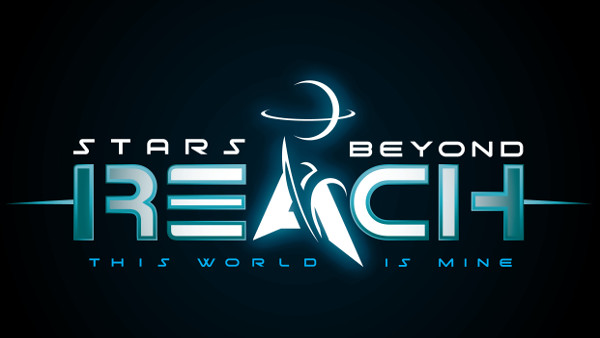
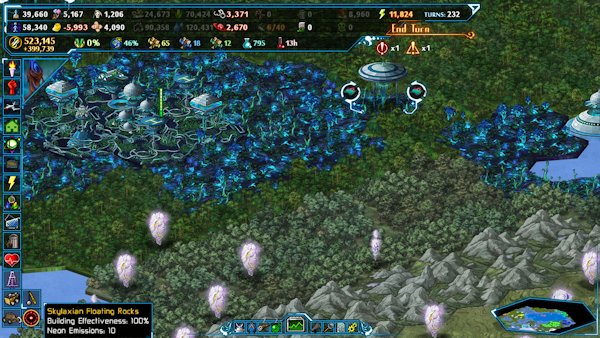
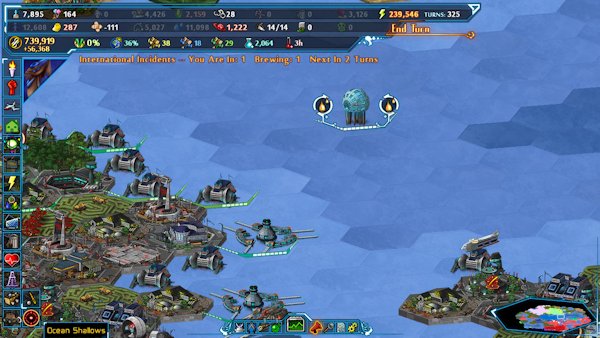
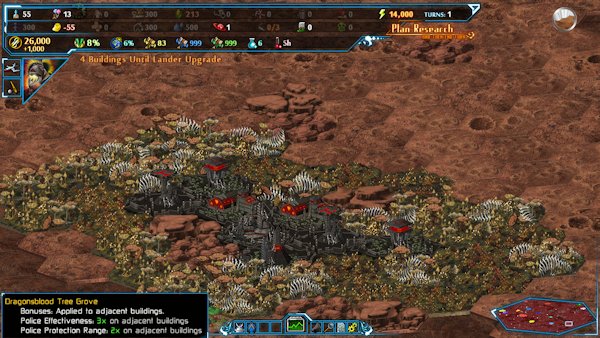
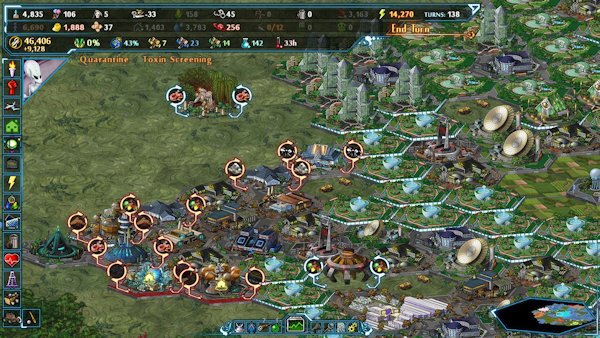
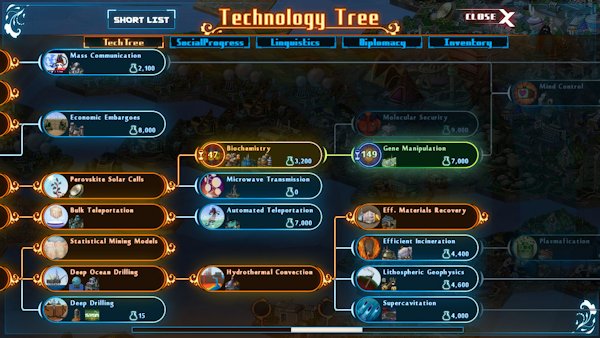
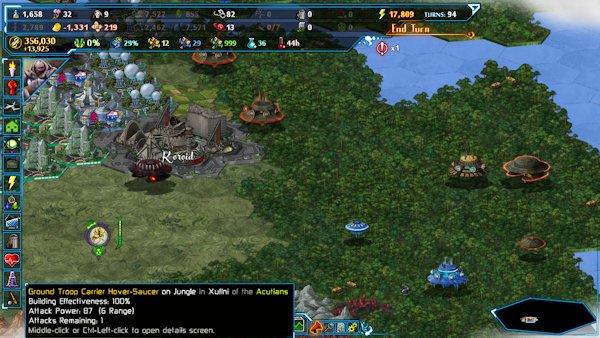
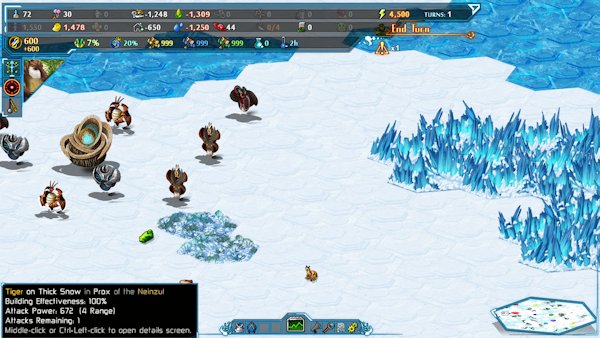
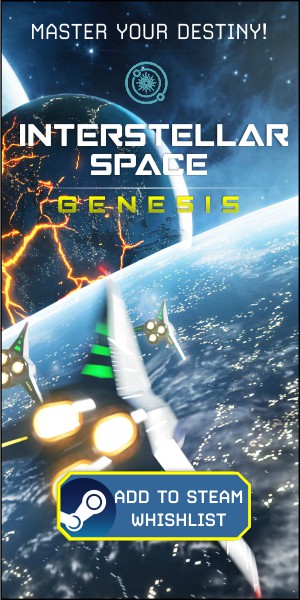





I’m going to pick this up at release.I do love a 4x that has lots of simulation.DW comes to mind but this looks 10 time deeper.
So is this a one city deal? One planet? Or do you create a Galactic Civ?
It’s a one planet / one world thing. That part I am sure of from the description of the game.
Though this second thing I can’t confirm (so I might be wrong), you are not bound to your initial city. So you can expand to other regions that is not contiguous with your initial settlement. Since I haven’t played it, I do not know how these outcroppings are treated.
Hopefully, someone who knows for certain can answer the question.
Interesting. I do hope it’s a game worthy to be called a ‘grand’ strategy or some of the better 4x games out there. And not a small-as-in-could-easily-fit-as-an-ipad game.
It sounds absolutely fantastic and amazing.
I’m calling it now, this is the next SMAC right here.
Ok, despite the hype I’m feeling it does sound rather grand.
I love Sci-Fi, 4X, Simcity-style, etc. and this seems to mix it all up and glue it together with humor.
The only thing that could stop me buying this would be DRM.
I would preferably want a physical disc without DRM, bought in my local store, but I’ll consider digital if it’s on GOG.com or similar.
From the interview: “Each one of the computer races has their own set of buildings and motivations and AI and even rules, and they play pretty differently from you, want different things, and so on.”
Hmm… That will make it very difficult to determine if game balance is correct, the quality of the A.I., or if some “feature” is actually a bug.
I tend to shy away from RTS games anyway so I think I’ll watch from the sidelines with this one.
Your confusing me
“Stars Beyond Reach is a turn-based, sci-fi themed, planetary scale 4X strategy game.”
Why are you saying RTS?
This one has my interest up abit
My mistake. The screen shots looked like an RTS (to me), and the article mentioned RTS several times, so I thought it was. On re-reading the article, I see that it is turn-based.
Nevertheless, my concern remains: if each faction plays by different rules with different needs and goals, how can the human player determine if A.I. behavior is a bug, a feature, a balance problem, or cheating?
I’ll be curious to see how this one shakes out.
The non playable A.I’s start stronger and are more like NPC’s that do not play to win so balance is not a issue.
I wish more 4X games had this approach but because of a tiny demographic that play multiplayer they end up bland with nothing really interesting about the factions apart from some bonus-malus ala GC3.
This game reminds me on Amiga game called Utopia.
Lately there is a tendency in 4-x games to put more and more weight in the management section, and leave tactic/strategy as a secondary feature.
I sure hope this won’t be the case with this title.
A quick update for those that follow this game, I have updated the release date. It has been pushed back several times but now the game has been pushed back to 2016. No official date has been given.